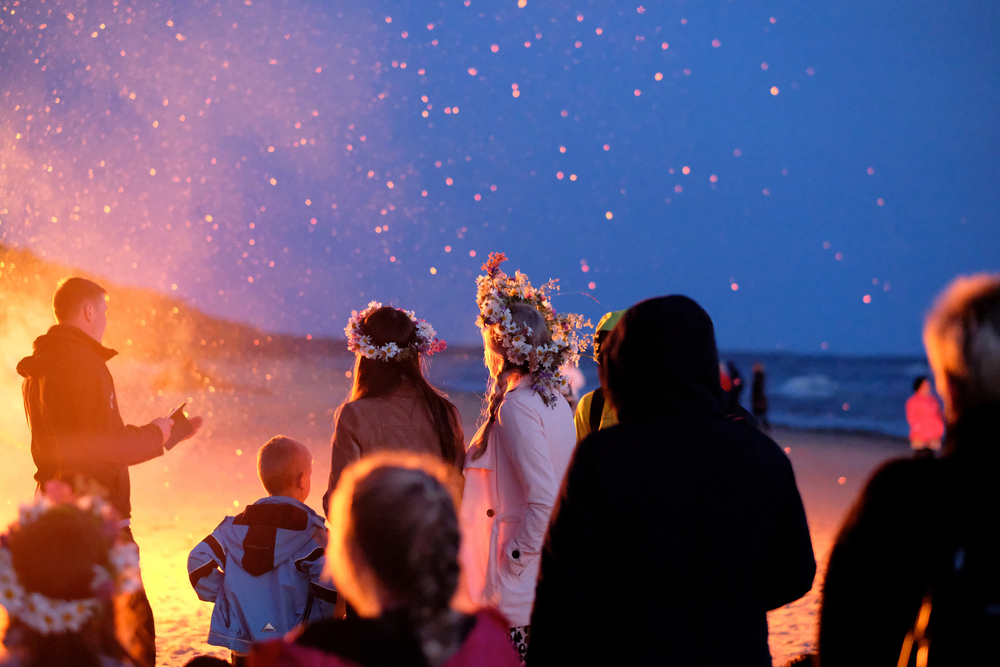
Mother Nature holds many secrets, and her bounty is diverse, colorful, and life-giving. Many cultures worldwide worship Mother Nature with ceremonies, festivals, and other spiritual practices. In ancient times, festivals generally coincided with the changing seasons. Many people today have returned to these ancient roots and created celebrations for the solstices and equinoxes. Planning a solstice celebration is easier than it seems at first, and this quick guide will outline the basics.
Understanding the Meaning Behind the Solstices
There are two solstices during the calendar year, each with a specific meaning. A solstice occurs when the sun is either at its highest or lowest point on the horizon for the entire year. The sun’s placement in the sky coincides with how much daylight people experience on the ground. The summer solstice marks the longest day of the year, the day with the most hours of sunlight. The winter solstice happens on the longest night of the year, the day with the fewest hours of sunlight.
The northern and southern hemispheres experience the solstices at opposite times of the year. In North America and Europe, the winter solstice occurs in December, but in Australia, the winter solstice happens in June.
For hundreds of years, people recognized the crucial moment in time that marked the start of summer and winter. Each season brought different kinds of work and rest, and it was important to honor the natural cycles of life.
Organizing a Special Solstice Meal for Each Season
The most prominent aspect of any solstice celebration is the food, which is why organizing a special meal for the day is important. Solstices are times of feast, and all of the food should relate to the bounty of the particular season and location. That means solstice meals should be seasonal and locally sourced.
In the summer, a solstice feast might include seasonal fruits, light desserts, wine, cold salads, and fish. It’s also appropriate to include round dishes or foods, as well as anything reminiscent of the sun and fire.
Many people already celebrate the winter solstice without realizing it because it aligns with what is now Christmas. A winter solstice feast often includes potatoes and other roasted tubers, squash, nuts, berries, and fatty, savory meat dishes. No winter solstice celebration is complete without lots of candles.
Embracing a Spiritual Practice To Honor the Earth
Spiritual practices are a vital part of celebrating the solstices, but they can differ widely from one person to the next. Modern-day Pagans take inspiration from their ancient ancestors when designing contemporary sacred rites and ceremonies. Common spiritual practices on the solstices are:
- Dancing and musical performances
- Using incense and candles
- Praying and meditating at dawn or dusk
- Retreating into nature for one or more days
- Swimming and ablution in natural water
- Creating and worshipping an altar
Including Ancestor Worship in a Solstice Event
Ancestor worship is another spiritual practice that greatly adds to any solstice celebration. Many cultures around the world make it a priority to recognize and honor the people who came before them. Christian and Western festivals don’t usually include a central ancestral element, which might be why Pagans and agnostics have begun to explore including ancestor worship as part of solstice and equinox celebrations. By creating something as simple as a photo altar and lighting candles for grandparents and great-grandparents, people can honor their roots and reflect on how the past lives on in the present.
The summer and winter solstices happen every year and offer opportunities to gather together and honor the power and beauty of nature. From personal reflection to group dances and sing-a-longs, solstice celebrations are as unique as the people planning them.

